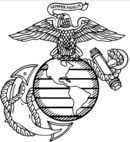The U.S. Army is more than twice the size of the U.S. Marine Corps. Their mission and mandate are different, and so are the eligibility criteria for admission into the two institutions. For instance, the maximum age for enlisting in the army is 35 but it is 28 for the Marines.
Comparison chart
| | Marines | United States Army |
|---|---|---|
| Introduction (from Wikipedia) | The United States Marine Corps (USMC) is a branch of the United States Armed Forces responsible for providing power projection from the sea,[7] using the mobility of the United States Navy to deliver combined-arms task forces rapidly. | The United States Army is the main branch of the United States Armed Forces responsible for land-based military operations. It is the largest and oldest established branch of the U.S. military, and is one of seven U.S. uniformed services. |
| Size | 202,779 active (as of October 2010); 40,000 reserve (as of 2010) | 561,984 Active personnel, 567,299 Reserve and National Guard personnel, 1,129,283 total |
| Type | Amphibious and expeditionary | Armed terrain force |
| Part of | Department of Defense, Department of the Navy | Department of War (1789–1947), Department of the Army (1947–present), Department of Defense |
| Motto | Semper Fidelis | This We'll Defend |
| Country | United States of America | United States of America |
| Engagements | American Revolutionary War, Quasi-War, Barbary Wars, Seminole Wars, Mexican–American War, American Civil War, Spanish–American War, Philippine–American War, Boxer Rebellion, Banana Wars, World Wars I & II, Korean War, Vietnam War, Iraq War | Revolutionary War, Indian Wars, War of 1812, Mexican–American War, Utah War, American Civil War, Spanish-American War, Philippine-American War, Banana Wars, Boxer Rebellion, Border War, World War I, World War II, Korean War, Vietnam War, etc. |
| Garrison/HQ | Headquarters Marine Corps | Pentagon Building |
| Insignia | Eagle, globe and anchor | Star logo |
| Years Active | 10 November 1775 – present | 14 June 1775 – present |
| Commanders | Commandant: Gen Robert Neller; Assistant Commandant: Gen Glenn Walters; Sergeant Major of the Marine Corps: SgtMaj Ronald Green | Secretary: John M. McHugh; Chief of Staff: Gen. Raymond T. Odierno; Vice Chief of Staff: Gen. John F. Campbell; Sergeant Major: SMA Raymond F. Chandler |
Mission
The Army’s purpose is defined as preserving the peace and security and providing for the defense of the United States, supporting national policies, implementing national objectives, and overcoming any nations responsible for aggressive acts that imperil the peace and security of the U.S.
The Marines’ mission is the seizure or defense of advanced naval bases and other land operations to support naval campaigns, the development of tactics, techniques and equipment for amphibious landing forces, and other duties such as the President may direct.
Recruitment and Initial Training
Eligibility and Screening
The minimum age for enlisting in the army is 17 with parental consent, or 18 without consent. The maximum age for enlisting is 35. Individuals must either be U.S. citizens or legal permanent immigrants, including citizens of Guam, Puerto Rico, the U.S. Virgin Islands, the Northern Marianas Islands, American Samao, the Federated States of Micronesia, and the Republic of the Marshall Islands. Applicants who have been residents of countries considered hostile to the U.S. need a waiver to enlist. A waiver is required if an applicant has two or more dependents. Single parents cannot enlist in the U.S. military. Male applicants must be between 60 and 80 inches, and women must be between 58 and 80 inches.
The maximum age for enlisting in the Marines is 28. The Marines have the same citizenship requirements as the Army. A waiver is required if a potential Marine has any dependents under the age of 18. If a single parent wishes to enlist, they must give up legal custody and wait over a year to enlist. Male marines must be between 58 and 78 inches tall, and female marines must be between 58 and 72 inches.
Initial Training
Basic training in the U.S. Army is 10 weeks long, and is usually followed by Advanced Individualized Training (AIT), where they are trained for their future specialties.
Marine boot camp training is more mentally and physically challenging than the basic training programs of any other military services. It last 13 weeks and is open to both men and women. Roughly 35-40,000 recruits undergo this training every year. They must pass a fitness test to start training; those who fail receive individualized attention and training until they pass.
Notable Missions
The U.S. Army has been involved in almost all of the U.S.’s wars, home and abroad, including the Revolutionary War, both World Wars, and, most recently, the Wars in Iraq and Afghanistan.
The Marines have been involved in many conflicts, and played key roles in battles such as Tripoli, Iwo Jima, Guadalcanal and Ichon Bay.
Insignia
Members of the U.S. Army wear a wide assortment of insignia. The Army logo is a white star, outlined in black and yellow, in a black rectangle. The emblem has a Roman cuirass in the center, below on unsheathed sword. A Phrygian cap is supported on the sword point. The emblem also features a flag above a cannon barrel and drum.
The official emblem of the Marine Corps is the Eagle, Globe and Anchor. The present design was adopted in 1955 and features a globe intersected by an anchor. An eagle stands on the globe, its wings spread, with a ribbon in its beak bearing the Latin phrase semper fidelis.



 Marines
Marines  Green Berets
Green Berets  FBI
FBI  F-14
F-14  F-15 Eagle
F-15 Eagle  Al-Qaeda
Al-Qaeda
Comments: Marines vs United States Army